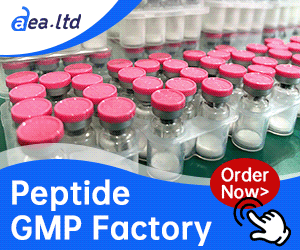- Joined
- Sep 25, 2011
- Messages
- 1,087
- Reaction score
- 20
- Points
- 38
Growth Hormone Releasers History Leading up to Ipamorelin
GHRH
There are two known hypothalamic hormones, Growth Hormone Releasing Hormone (GHRH) and somatostatin, that are key regulators of Growth Hormone (GH) release from somatotrophs (GH releasing cells) in the pituitary gland; GHRH stimulates GH secretion, and somatostatin inhibits GH secretion.
GHS
In addition to GHRH, a synthetic hexapeptide (6-amino-acid peptide), was created in the late 1970’s by the Bowers’ group and named GHRP-6 (growth hormone releasing peptide (made up of 6 amino acids) 6). This peptide was found to illicit a strong GH release response and so became the first member of a class of growth hormone releasing peptides called GH secretagogues.
Structurally GHRP-6 is composed of the amino acids L-Histidine, D-Tryptophan, L- Alanine, L- Tryptophan, D- Phenylalanine and L- Lysine.
The "L" form called "Levo" of an amino acid is the naturally occurring form and often in the nomenclature the "L" is dropped. The "D" form called "Dextro" does not occur in nature and is the isomeric form (i.e. mirror image) of the "L" form.
The structure of GHRP-6 is represented as:
Investigators later modified the structure of GHRP-6 and identified other GH releasing peptides.
GHRP-1 was created and briefly tested as a peptide with a similar GH release profile. Its structure is represented as:
Investigators modified these structures and found that GH-releasing activity was enhanced by replacing D-Trp of GHRP-6 at the second position with D-2-(2-napthyl)alanine and His of GHRP-6 at the first position with D-alanine to create GHRP-2 whose structure is represented as:
Through various studies over the years the mechanisms underlying GHRP-6’s actions as a GH releaser were examined. It was established that GHRP-6 acted directly on somatotrophs to cause GH release and to potentiate the effects of GHRH. In contrast to GHRH, which increases cAMP in somatotrophs, GHRP-6 alone had no effect on intracellular cAMP, but when combined with GHRH, the hexapeptide amplified the effects of GHRH on cAMP production. GHRP-6 was subsequently shown to "activate L-type Ca2+ channels, to depolarize the plasma membrane of somatotrophs by inhibiting K+ channels, and behave as a functional antagonist of somatostatin. In contrast to GHRH, which stimulates GH release through the kinase A pathway, GHRP-6 apparently transduced its signal through protein kinase C."
This is how all of the GHRPs work at the pituitary to effect GH release. They modulate GH-release in pulsatile fashion. So in addition to the key regulators GHRH and Somatosatatin we have a third system: "the GH-releasing peptide (GHRP) system".
GHRP-2, GHRP-1, GHRP-6, hexarelin, all elevate plasma GH in humans. All of these GH secretagogues potently release GH and in addition, prolactin (PRL) and cortisol. A molecular derivative of GHRP-6, known as MK-677 appears to effect cortisol indirectly by stimulating adrenocorticotrophin (ACTH). We could say that these GH secretagogues are a little sloppy or that they are not 100% specific effectors of GH release.
GHRH administration in studies in humans causes a slight increase in both ACTH and cortisol. So GHRH is not totally specific for GH release either.
Ipamorelin is a growth hormone releasing peptide that was created by eliminating the Ala-Trp bond found in the middle of GHRP-6, GHRP-2 and GHRP-1. The His-D2-Na at the second and third position of GHRP-1 was used. The Alanine (Ala) common to the GHRPs was replaced with Aib to form a pentapeptide whose structure is represented as:
Note: Aib = Aminoisobutyryc acid and D-2-Nal = "D" form of 2’-naphthylalanine
Ipamorelin was found to release GH with high potency and efficacy without significant effects on plasma ACTH or cortisol levels or on prolactin. Keep in mind that the main endogenous GH releasing compound, GHRH itself has a slight effect on ACTH and cortisol and that the other GHRPs can have varying effects on ACTH, cortisol and prolactin. Therefore ipamorelin is the most selective GHRP receptor-active GH secretagogue. It is highly specific for GH release and nothing more.
The GH release profile is weaker then GHRP-2 and Hexarelin but compares favorably to GHRP-6.
GHRPs
All of these GHRPs are effective in stimulating growth.
The stimulatory effect on GH release for all the GHRPs is persistent. The GHRPs hexarelin and GHRP-2 have been reported to increase growth velocity in children with short stature/GHD.[SUP]1,2[/SUP]
The GHRPs enhance the amplitude of the physiological GH pulses [SUP]3[/SUP], whereas an s.c. injection of GH induces a bell-shaped curve of serum GH concentrations that are continuously high for more than 12 hours. [SUP]4[/SUP]
It has also been found that 12 weeks of treatment with either ipamorelin or GHRP-6 increased bone mass in young adult female rats.
GHRH
There are two known hypothalamic hormones, Growth Hormone Releasing Hormone (GHRH) and somatostatin, that are key regulators of Growth Hormone (GH) release from somatotrophs (GH releasing cells) in the pituitary gland; GHRH stimulates GH secretion, and somatostatin inhibits GH secretion.
GHS
In addition to GHRH, a synthetic hexapeptide (6-amino-acid peptide), was created in the late 1970’s by the Bowers’ group and named GHRP-6 (growth hormone releasing peptide (made up of 6 amino acids) 6). This peptide was found to illicit a strong GH release response and so became the first member of a class of growth hormone releasing peptides called GH secretagogues.
Structurally GHRP-6 is composed of the amino acids L-Histidine, D-Tryptophan, L- Alanine, L- Tryptophan, D- Phenylalanine and L- Lysine.
The "L" form called "Levo" of an amino acid is the naturally occurring form and often in the nomenclature the "L" is dropped. The "D" form called "Dextro" does not occur in nature and is the isomeric form (i.e. mirror image) of the "L" form.
The structure of GHRP-6 is represented as:
His-D-Trp-Ala-Trp-D-Phe-Lys-NH2
Investigators later modified the structure of GHRP-6 and identified other GH releasing peptides.
GHRP-1 was created and briefly tested as a peptide with a similar GH release profile. Its structure is represented as:
Ala-His-D2-Nal-Ala-Trp-D-Phe-Lys-NH2
Investigators modified these structures and found that GH-releasing activity was enhanced by replacing D-Trp of GHRP-6 at the second position with D-2-(2-napthyl)alanine and His of GHRP-6 at the first position with D-alanine to create GHRP-2 whose structure is represented as:
D-Ala-D-2 Nal-Ala-Trp-D-Phe-Lys-NH2
Through various studies over the years the mechanisms underlying GHRP-6’s actions as a GH releaser were examined. It was established that GHRP-6 acted directly on somatotrophs to cause GH release and to potentiate the effects of GHRH. In contrast to GHRH, which increases cAMP in somatotrophs, GHRP-6 alone had no effect on intracellular cAMP, but when combined with GHRH, the hexapeptide amplified the effects of GHRH on cAMP production. GHRP-6 was subsequently shown to "activate L-type Ca2+ channels, to depolarize the plasma membrane of somatotrophs by inhibiting K+ channels, and behave as a functional antagonist of somatostatin. In contrast to GHRH, which stimulates GH release through the kinase A pathway, GHRP-6 apparently transduced its signal through protein kinase C."
This is how all of the GHRPs work at the pituitary to effect GH release. They modulate GH-release in pulsatile fashion. So in addition to the key regulators GHRH and Somatosatatin we have a third system: "the GH-releasing peptide (GHRP) system".
GHRP-2, GHRP-1, GHRP-6, hexarelin, all elevate plasma GH in humans. All of these GH secretagogues potently release GH and in addition, prolactin (PRL) and cortisol. A molecular derivative of GHRP-6, known as MK-677 appears to effect cortisol indirectly by stimulating adrenocorticotrophin (ACTH). We could say that these GH secretagogues are a little sloppy or that they are not 100% specific effectors of GH release.
GHRH administration in studies in humans causes a slight increase in both ACTH and cortisol. So GHRH is not totally specific for GH release either.
Ipamorelin is a growth hormone releasing peptide that was created by eliminating the Ala-Trp bond found in the middle of GHRP-6, GHRP-2 and GHRP-1. The His-D2-Na at the second and third position of GHRP-1 was used. The Alanine (Ala) common to the GHRPs was replaced with Aib to form a pentapeptide whose structure is represented as:
Aib-His-D-2-Nal-DPhe-Lys-NH2
Note: Aib = Aminoisobutyryc acid and D-2-Nal = "D" form of 2’-naphthylalanine
Ipamorelin was found to release GH with high potency and efficacy without significant effects on plasma ACTH or cortisol levels or on prolactin. Keep in mind that the main endogenous GH releasing compound, GHRH itself has a slight effect on ACTH and cortisol and that the other GHRPs can have varying effects on ACTH, cortisol and prolactin. Therefore ipamorelin is the most selective GHRP receptor-active GH secretagogue. It is highly specific for GH release and nothing more.
The GH release profile is weaker then GHRP-2 and Hexarelin but compares favorably to GHRP-6.
GHRPs
All of these GHRPs are effective in stimulating growth.
The stimulatory effect on GH release for all the GHRPs is persistent. The GHRPs hexarelin and GHRP-2 have been reported to increase growth velocity in children with short stature/GHD.[SUP]1,2[/SUP]
The GHRPs enhance the amplitude of the physiological GH pulses [SUP]3[/SUP], whereas an s.c. injection of GH induces a bell-shaped curve of serum GH concentrations that are continuously high for more than 12 hours. [SUP]4[/SUP]
It has also been found that 12 weeks of treatment with either ipamorelin or GHRP-6 increased bone mass in young adult female rats.
1 - Laron Z, Frenkel J, Deghenghi R, Anin S, Klinger B & Sibergeld A 1995 Intranasal administration of the GHRP hexarelin accelerates growth in short children. Clinical Endocrinology 43 631–635
2 - Mericq V, Cassorla F, Salazar T, Avila A, Iniguez G, Bowers C & Merriam G 1998 E?ects of eight months treatment with graded doses of a growth hormone (GH)-releasing peptide in GH-de?cient children. Journal of Clinical Endocrinology and Metabolism 83 2355–2360.
3 - Smith R, Van Der Ploeg L, Howard A, Feighner S, Cheng K, Hickey G, Wyvratt MJ, Fischer M, NargundR&Patchett A 1998 Peptidomimetic regulation of growth hormone secretion. Endocrine Reviews 18 621–645
4 Oscarsson J, Johannsson G, Johansson J-O, Lundberg P-A, Lindstedt G & Bengtsson B-Å 1997 Diurnal variation in serum insulin-like growth factor (IGF)-I and IGF binding protein-3 concentrations during daily subcutaneous injections of recombinant human growth hormone in GH-de?cient adults. Clinical Endocrinology 46 63–68
5 - Svensson J, The GH secretagogues ipamorelin and GH-releasing peptide-6 increase bone mineral content in adult female rats, Journal of Endocrinology (2000) 165, 569–577
2 - Mericq V, Cassorla F, Salazar T, Avila A, Iniguez G, Bowers C & Merriam G 1998 E?ects of eight months treatment with graded doses of a growth hormone (GH)-releasing peptide in GH-de?cient children. Journal of Clinical Endocrinology and Metabolism 83 2355–2360.
3 - Smith R, Van Der Ploeg L, Howard A, Feighner S, Cheng K, Hickey G, Wyvratt MJ, Fischer M, NargundR&Patchett A 1998 Peptidomimetic regulation of growth hormone secretion. Endocrine Reviews 18 621–645
4 Oscarsson J, Johannsson G, Johansson J-O, Lundberg P-A, Lindstedt G & Bengtsson B-Å 1997 Diurnal variation in serum insulin-like growth factor (IGF)-I and IGF binding protein-3 concentrations during daily subcutaneous injections of recombinant human growth hormone in GH-de?cient adults. Clinical Endocrinology 46 63–68
5 - Svensson J, The GH secretagogues ipamorelin and GH-releasing peptide-6 increase bone mineral content in adult female rats, Journal of Endocrinology (2000) 165, 569–577







